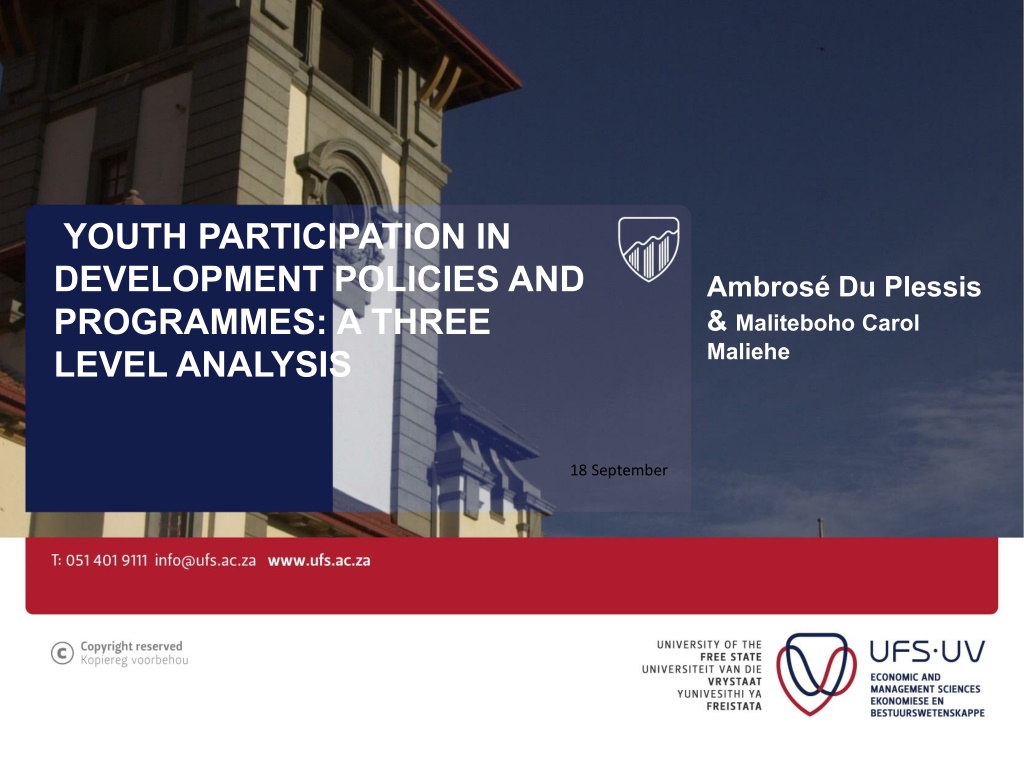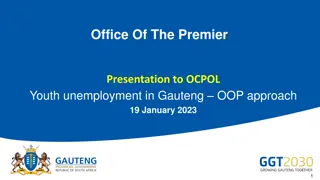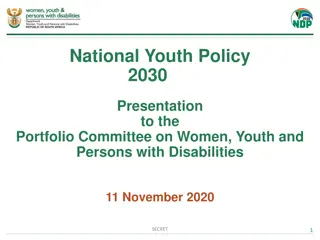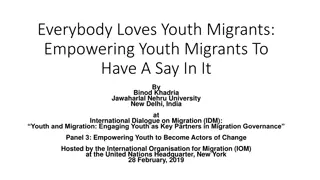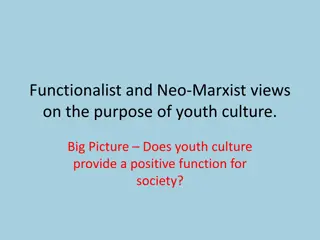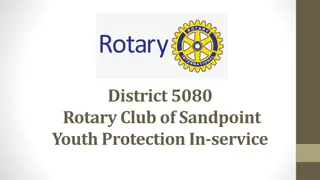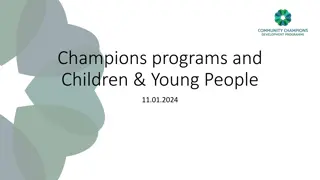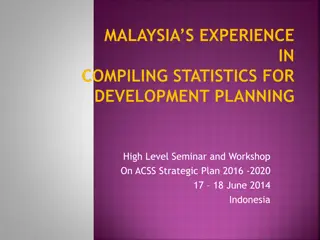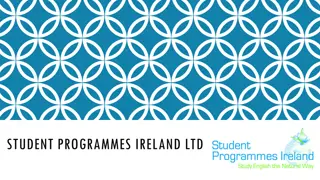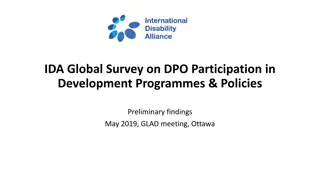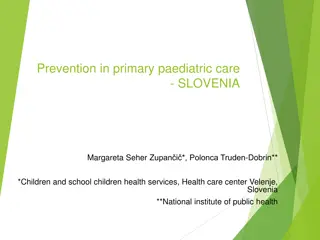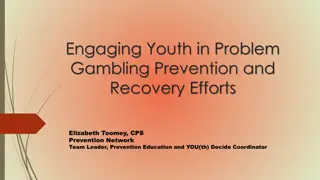Youth Participation in Development Policies & Programmes: An Analysis
In this insightful analysis, the importance of youth participation in community development in South Africa is discussed, emphasizing the need for the youth to be actively involved in policy formulation and implementation to address their needs effectively. The article highlights challenges faced by the youth and calls for urgent measures to empower them economically and incorporate them into development processes. It also critiques the existing lack of structure and coherence in youth development policies and programs.
Download Presentation

Please find below an Image/Link to download the presentation.
The content on the website is provided AS IS for your information and personal use only. It may not be sold, licensed, or shared on other websites without obtaining consent from the author. Download presentation by click this link. If you encounter any issues during the download, it is possible that the publisher has removed the file from their server.
E N D
Presentation Transcript
YOUTH PARTICIPATION IN DEVELOPMENT POLICIES AND PROGRAMMES: A THREE LEVEL ANALYSIS Ambros Du Plessis & Maliteboho Carol Maliehe 18 September
TABLE OF CONTENTS Introduction Literature Review Methodology Mangaung Metropolitan Municipality: Youth Development Policy Findings Conclusion and Reflections
INTRODUCTION Youth participation in community development is viewed as an important prerequisite for a lasting democracy. Approximately 50 percent of South Africa s population are youth. A commonly accepted definition of youth in South Africa is that it includes all citizens between 14 and 35 years of age. Initiatives designed on behalf of the youth should develop young people s ability to think critically and come-up with plans to improve their quality of life. Consequently, development is inextricably linked to participation in that local people should be involve in development processes that affect not only their lives but the intervention itself (De Satg , 2009: 7).
However, it appears that the youth is often neglected in the formulation and implementation of policies and programmes that are suppose to address their needs. This article argues that the youth should be incorporate economic empowerment and development policies and programmes. Government realises that it needs to introduce urgent measures to deal with the plight of the youth. If not, politics may well continue to manifest in violence rather than through formal governmental structures. In addition, this article suggest that there is no structure and congruence in the formulation and implementation of youth development policies and programmes.
LITERATURE REVIEW The bulk of the research conducted on youth participation in South Africa has focused on the political spectrum. More specifically, political apathy amongst South Africa s youth have become a burning issue amongst social scientists (Booysen, 2015; Bratton, Chu, and Lagos, 2010; Kersting, 2007; Kersting, 2012; Fakir, Bhengu and Larsen, 2010; Schulz-Herzenberg, 2014). Youth participation is often interpreted in the form of citizenship, voter turnout and normative beliefs inherently part of democracy as a political system. According to Mattes and Richmond (2015) political scientists are predominately preoccupied with scrutinising South Africa s political culture, which focus on what citizens need or do not want from the current political system.
LITERATURE REVIEW (CONTINUES..) The National Youth Development Agency Act 54 of 2008 views youth participation ambiguously and focus predominately on political processes such as democracy, community involvement, decision- making and the development of young people in the three spheres of government (RSA, 2008). This, however, says little about the current context in which South Africa s young people find itself. Youth Participation is more than just a political method and involves a host of variables such as education, jobs, gender, social classes and other dimensions that need to be considered. It includes a host of other actors such as non-governmental organisations, religious groups, business, labour unions and others.
It is clear that youth participation should be viewed as an all- encompassing process that deals with all matters affecting the youth. This may include political, social, cultural and economic issues. In South Africa today the economic spectrum has become increasingly important, especially with regard to youth unemployment. In 2013, the youth desk in the Presidency stated that young people felt excluded because of high unemployment and their inability to participate in the economy. Consequently, many young people have become disillusioned with conventional policies and programmes that sought to satisfy their needs.
Mtwesi (2014) indicated that contemporary youth development programmes remains work in progress. It is almost impossible to examine the efficiency and effectiveness of youth policies/programmes due to poor reporting. When examining the National Youth Policy (hereafter NYP) (2015- 2020), it soon became apparent that the latter is still vaguely formulated and unsubstantiated. Firstly, there is little evidence of the successes and failures of the previous National Youth Policy (2009-2014). Secondly, some of the findings are based on speculations. Evident of this is the NYP (2015-2020, RSA) assertion that the socio-economic situation of young people has improved over the past years. While these improvements may not necessarily be attributed to the NYP 2009-2014.
The contemporary NYP (2015-2020) remains ill-defined and incapable of diagnosing the current challenges of South Africa s young people. Thus, at the end of the NYP of 2015-2020, South Africa's youth will be exactly where they were in 2009 with the culmination of the first NYP 2009-2015. It may be argued that the South African Government does not understand "youth participation in development", which undeniably transpire into a flawed diagnoses and prognosis of policy issues. Cloete and Meyer (2011: 95) state that "A wrong policy diagnosis might result in an incorrect policy strategy prescription. This could have fatal consequences in the form of a policy pathology spinning out of control."
South Africas top-down approach and inability to devise correct policy prescription strategies for the youth, has led some scholars to argue that the youth is a "ticking time bomb" waiting to explode. Adults across the globe have often design initiatives on behalf of the youth. As such, adult driven youth development programmes have often been criticised of stemming creativity and ownership. Consequently, young people is often marginalised in their own communities. They play second fiddle to established organisations or mother bodies. Many programmes design for the youth has become seasonal initiatives.
As a result, young people are generally distrustful of institutions which embody a state or a top-down approach to political life which they reject. Pre-determined youth development programmes or policies are often erroneously associated with youth participation or development. For example, the National Planning Commission had conversations with more or less 70 000 youth to design an empowerment strategy. As a social scientist, this becomes increasingly problematic for a number of reasons. First, such a sample cannot be a representable, since the youth constitute nearly 27 million of the South African population. Second, the sample did not mentioned the heterogeneity of the youth itself.
Emphasis is also placed on the urbanised youth with little reference if any to the youth in rural areas. The National Planning Commission claimed to have used a "youth Lens" in their analysis, but the process may best be described as consultative forum. Against this backdrop, youth policies or programmes should genuinely be committed to the empowerment of young people. Ideally, youth programmes should go beyond public rhetoric and focus more on pragmatic ways that will lead to tangible development.
STATUTORY FRAMEWORKS AND YOUTH DEVELOPMENT Since 1996, South Africa introduced a range of policies that led to the culmination of the 2009-2014 National Youth Policy (NYP). The National Youth Policy of 2009-2014 is derived from the South African Constitution Act 108 of 1996, the United Nations World Programme of Action for Youth to the Year of 2000 and beyond, the African Youth Charter of 2006 and numerous other policies (RSA, 2009). The NYP of 2009-2014 was created to address the current and past challenges that the youth face in South Africa. Youth empowerment is viewed as a central component in the development of young people.
It is important to note although the aforementioned policies claimed to have followed a holistic approach, it focus predominately on youth groups outside the social, political and economic mainstreams. This approach itself is selective and excludes young people part of the mainstream that could have made an effective contribution to youth development in general. Nonetheless, key elements that the National Youth Policies (RSA, 2009 and RSA, 2015) seek to address includes the following: Satisfying the needs of the youth; Encouraging positive outcomes; Coordinating and providing youth centric services, opportunities, choices, support structures and forming partnerships with the youth.
To achieve the above mentioned priorities, the (NYDA) established the first ever Integrated Youth Development Strategy (IYDS) in 2011. The IYDS was developed to ensure that the ideals and aspirations of the NYP of 2009-2014 are achieved. However at the end of 2014, especially with the induction of the 2015-2020 NYP there is no updated version of the IYDS. It cannot be assumed that an outdated strategy will be capable of holistically addressing the challenges of the youth.
YOUTH EMPOWERMENT SERVICES/STRATEGY The service/strategy was launched in 2018 in an effort to create 1 million new 12-month job opportunities for young people In 2018, it launched the First YES Community Hub, which is situated in Tembisa In 2019, it is looking to establish 100 community hubs The hubs are a part of the YES SMMES Development Strategy which has three focal points. These focal points include: business development route to market skills training. YES sees local communities becoming producers and owners of opportunity for new growth rather than standing on the sidelines as consumers. Has partner up with Private companies such as MTN, LinkedIn to manage issues concerning Job creation ensure more Job Creation However initiative is still operating at a National Level and is not aligned with NYDA, especially in the Free State Provincial Office
FREE STATE PROVINCIAL YOUTH DEVELOPMENT PROGRAMS Agriculture & Rural Development: National Youth Corps Programme together with the National Department of Rural Development and Land Reform implemented DAFF Programme of Youth in Agriculture and Rural Development. There was an intake of 351 young people for ARYSEC in February 2011. There was also training provided in Electronic Records Management through different Further Education and Training (FET) colleges in Motheo, Ledjweleputswa and Fezile Dabi Cooperative Governance, Traditional Affairs & Human Settlements: Free State Youth at Work programme identified 60 youth whom will be trained in construction and given an opportunity to work on some of the construction projects targeted at building houses, National Youth Development Agency (NYDA)
Social Development: The Department of Social Developments focus on the youth sector include facilitating training opportunities such as the Child and Youth Care NQF level 4 qualification, supporting youth clubs and campaigns aimed at the youth such as the anti-gangsterism campaign. Public Works: Electrical Apprenticeship Programme Built Environment Learnership Programme Contractor Development Programme New Venture Creation Learnerships
METHODOLOGY This study adopted a qualitative policy document analysis approach. More specifically, a retrospective analysis was followed, in which policy documents were carefully analysed and evaluated. Consequently, the method requires an in-depth understanding of the nature and purpose youth development policies in South Africa. The data was analysed and categorised using the interpretive research approach.
YOUTH DEVELOPMENT POLICY IN MMM The Youth development policy of MMM which was drafted in 2015 emphasizes the importance of it being an instrument that reflects aspirations of young people in Mangaung and is a confirmation of their voices with regard to their own development, empowerment and rights. Goal of the National Youth Policy 2015-2020, the Policy goal is also to consolidate youth initiatives that intentionally enhance the capabilities of young people to transform the economy and society they live in by addressing their needs, promoting positive outcomes, opportunities, choices, relationships and support necessary for holistic development of all young people, Highlights challenges faced by the youth such as; Poverty and Unemployment Food Security Entrepreneurship within scarce sectors Youth with Disabilities and so forth
FINDINGS The Policy does not have specified support programs, which caters to various young people. It does not address the skilled/unskilled, entrepreneurial and non-entrepreneurial, young people that suffer from mental illness and substance abuse and so forth. It appears that the MMM youth development policy has failed in engaging various stakeholders and have no clear youth development strategy. Thus various spheres and sectors needs to be synchronized to establish an action plan that will re-develop youth programs within the municipality. Promote the use of technology, innovation as part of the 4th Industrial Revolution's rapid development There is a need to integrate national, provincial and local youth development policies and program in an efficient and effective manner.
CONCLUSION AND REFLECTIONS This presentation analysed the complexities associated with youth participation in the development of policies and programmes. More specifically, it followed a three-level analytical approach in scrutinising youth development policies and programmes. The political segment in South Africa has enjoyed centre stage through scholarly publications. Policies designed for the youth on a national level has been largely misdirected and ill-informed. A lack of empirical research has been detrimental for the design of effective youth development policies and programmes. It may be deduced that the MMM Youth Development policy contains speculative programmes and is misaligned with the youth. In conclusion youth development policies and programmes in the MMM should address the current socio-economic needs of the youth through continuous consultation and active participation.
